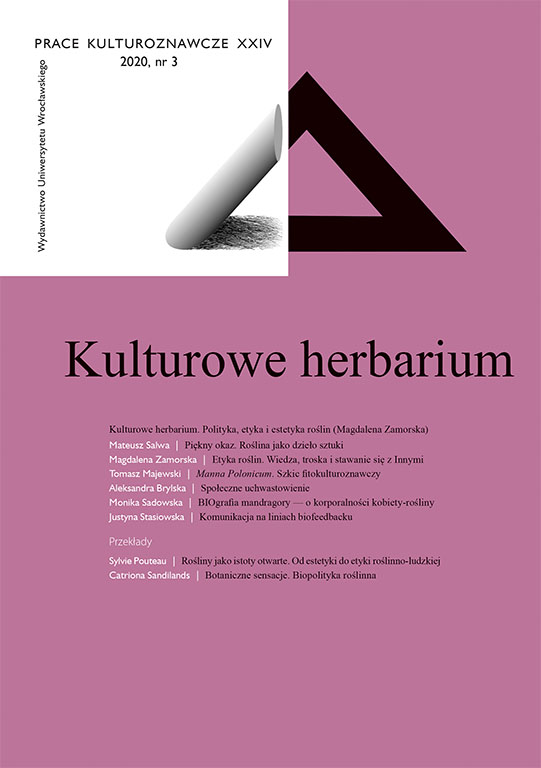

Artykuły

Manna Polonica (Glyceria flutans) to jedna z nazw dzikiego zboża zbieranego na podmokłych łąkach, czego świadectwo zachowało się w zielnikach i podręcznikach agronomii publikowanych w języku polskim od XVI do końca XVIII wieku. Zbieractwo i handel słodkim ziarnem „manny polskiej” lub „manny Polaków” (Manna Polonorum) wybitny biolog Józef Rostafiński wiązał ze starą etnowiedzą i biotopem najbardziej pierwotnych siedzib Słowian. Ten relikt zbieractwa (znany tylko na terenach słowiańskich) zanika, jak twierdzą etnobotanicy, w XIX wieku wraz z intensywnym osuszaniem terenów podmokłych. Autor tekstu, opierając się na historii ustnej z kręgu rodziny, dotyczącej wsi leżącej na mokradłach nad Bzurą, przypuszcza, że zbieractwo manny było tam praktykowane nadal w latach trzydziestych XX wieku. Przypadek ten daje asumpt, by, odnosząc się do obecnych w tym samym biotopie synantropijnych roślin poprzemysłowych (marzana barwierskia, Rubia tinctorum), przedyskutować ponownie pojęcie „przeżytku kulturowego” E.B. Tylora w kontekście naturokulury.